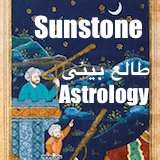A significant percentage of Iranian journalists reported experiences of arrest (41.2%), intimidation (51.4%), threats to their families (43.1%), torture (19.3%), and assault (10.5%), leading to PTSD and depression.
By Maryam Babak
Medium
In days when the weight of repression bears heavily on freedom of expression and journalists are disappearing from the scene one after another, a cold and pervasive silence has descended upon the media inside Iran and those who inhabit it. A silence born of censorship and pressure, and a reflection of the slow psychological erosion of those who spent years narrating society’s stories. After the Mahsa (Zhina) Amini movement and the widespread crackdown on free speech in Iran, many journalists were pushed out of work, countless newsrooms collapsed, and the tight-knit communities once bound together fell apart. Authoritarians know that when concerned individuals gather, it works against them. So they always wage war on collectives, whether it’s a circle of artists or a newsroom. Now, it has been a long time since Iran’s media community has sunk into an unprecedented silence, a silence under which the heavy shadow of depression is deeply felt.
In recent days, the Iranian Journalists Club made a call titled “Dialogue, Solidarity, and Solutions” to break this silence. Responses to this call came in the form of candid, bitter, and human essays. Accounts of depression, burnout, anxiety, and at times the thin line between life and death.
In one of the most precise descriptions, journalist and translator Emili Amraei wrote: “We, the generation who were the voice of others, are now voiceless ourselves.” She wrote about days when newsrooms were a second home. But now, neither that space nor that sense of belonging remains. Amraei says, “The disconnection of this human network is more than losing a job. It is a rupture from the self.”
Out of this collective collapse, other journalists also wrote about their personal experiences. Zahra Jafarzadeh recalled the day she heard of Shideh Lalemi’s death (an Iranian journalist who died five years ago, and whose death was a massive shock), right after taking her first antidepressant. “I felt like I was at the bottom of a deep, black well. I was thinking about the end. Maybe like Shideh.” A year later, still undergoing treatment, she sees depression not as a personal crisis but as a direct outcome of her professional environment. Somayeh Jahed Ataeian, a journalist who now only occasionally writes, described hair loss and skin wounds caused by anxiety, working in a boutique, writing in fitting rooms, and the night she ended up in a hospital bed after swallowing a hundred diazepam pills. “When I woke up, eyes filled with pity and fear were staring at me.”
Marjan Ahmadi wrote with rare bluntness: “I regret not being in Shideh’s, Mahshad’s, or Reyhaneh’s place (Other journalist who are not among us anymore).” And continued, “I have no hope in people, in change, in the future. I am imprisoned in the inevitability of life.”
Yet not all the stories remained in darkness. Mahsa Jazini wrote about coming back, how “translation saved me.” Marzieh Hosseini said, “In a single moment, meaninglessness took over every fiber of my being. But what happens if no one is there at that moment?” For her, a new job, a listening friend, and a caring therapist became a way to continue living.
All these stories share something in common: a sense of erasure, abandonment, and the loss of an identity that was not just professional but existential. As Majid Ghazanfari, a former TV host, wrote: “My longing for broadcasting is not just missing a job. It is missing a part of myself.” When the camera turned off and the studio was lost, he was left alone with concerns no one voiced anymore.
Beyond economic hardship, what has pushed this crisis to a dangerous edge is the complete absence of support structures within the profession. If journalism in Iran is to survive, it needs more than just a pen. It needs care, human, professional, and sustained.
Mental health challenges among Iranian journalists
A study published in the Journal of Occupational Health examined the psychological well-being of Iranian journalists. The findings revealed that a significant number of journalists had experienced arrest (41.2%), intimidation (51.4%), threats to their families (43.1%), torture (19.3%), and assault (10.5%). These traumatic experiences were associated with higher levels of post-traumatic stress disorder (PTSD) and depression among the journalists. Notably, 78.1% of the journalists reported having stopped working on a story due to intimidation.
Globally, journalists are increasingly reporting mental health issues related to their work. A 2024 survey by Muck Rack found that 56% of journalists had considered quitting their job in the past year due to burnout, and 40% had previously left a role for the same reason.
Also, a report by the Organization for Security and Co-operation in Europe (OSCE) says that 67.1% of journalists surveyed had experienced job burnout more than once. The report also noted that 69.9% of journalists felt the consequences of reporting on traumatic events, with 6.7% experiencing serious and long-term psychological effects.
These findings underscore the significant mental health challenges faced by journalists, both in Iran and globally, due to the nature of their work and the environments in which they operate.
Dr. Anthony Feinstein, a psychiatrist at the University of Toronto and a leading researcher on journalists’ mental health, wrote in a report in collaboration with the Reuters Institute: “Media organizations have a duty to care for journalists at risk. Strong human connections and a sense of professional belonging are the most effective shields against chronic depression. If a newsroom becomes a place of rivalry, fear, silence, or censorship, what remains is not just an exhausted journalist, but a distorted report and an uninformed society.”
Marzieh Hosseini, a former reporter, writes: “No human willingly destroys themselves. But when all paths end in dead ends, in a moment, meaninglessness floods your being. And woe to that moment if no one is there.”
In the raw and honest testimonies that responded to the Iranian Journalists Club’s call, one theme kept surfacing: being cut off from newsrooms is the collapse of a professional and emotional refuge. In the absence of those lively spaces, where friendship, jokes, deadline screams, and balcony chats were a way of life, journalists are left with silence, loneliness, and anxiety. In such a void, self-care becomes a necessity for survival.
When there is no newsroom, creating support circles among colleagues, holding group conversations, or even keeping a notebook for recording inner voices can revive that human bond once woven into the newsroom. In the end, self-care is what Shaghayegh Arman referred to: “In a world of cunning foxes, you must stand and light a lamp.”
Throughout history, within burnout, hidden rage, and prolonged despair, books have been written that not only offer a path to healing and rebuilding human connection but also tie the lived experience of resistance and resilience to an inner, human gaze. These books illuminate the way to stay, to rise again, and to keep going for those who carry the light >>>










Comments